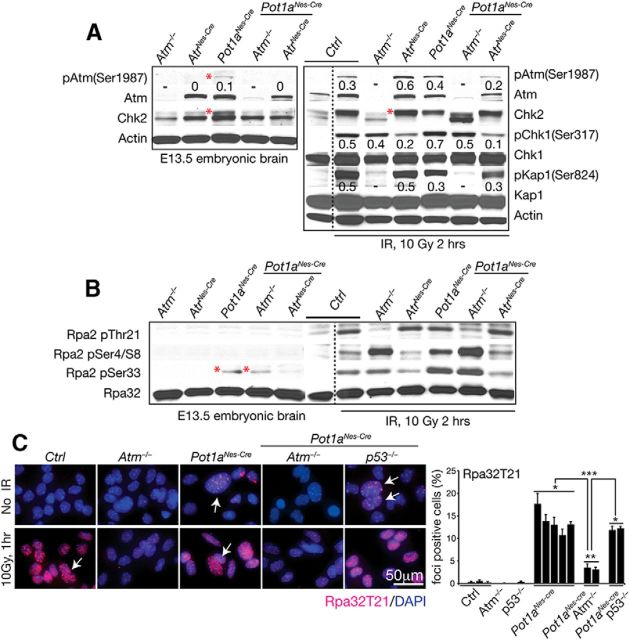Figure 7.
Atr is required to activate Atm-dependent DNA damage signaling after Pot1a loss. A, Western blot analysis of DNA damage signaling in isolated E13.5 embryonic brain shows that Atm (Ser1987) phosphorylation and Chk2 activation (red asterisk) occur after Pot1a loss in an Atr-dependent manner. Chk2 activation is shown as slower mobility of endogenous Chk2. IR was used to show that Pot1a-deficient tissue are competent for DNA damage signaling. Kap1(Ser824), Chk1(Ser317) phosphorylation and Chk2 activation (reduced mobility; red asterisk) are increased after radiation in an Atm-dependent manner. Phospho-serine specific antibodies are listed. Actin immunostaining shows relative protein loading. Numerical values reflect the ratio of endogenous Atm, Chk1, and Kap1 to phosphorylated levels. Western blots were done two independent times using pooled embryonic tissue. B, Phosphorylation of the RPA2 subunit in E13.5 embryonic brain shows endogenous phosphorylation at RPA2 at ser33 after Pot1a loss in an Atr-dependent manner (asterisks). Phosphorylation of other RPA2 serine and threonine residues is increased 2 h after 10 Gy IR. C, Immunocytochemistry with RPA2-Thr21 of astrocytes shows increased Atm-dependent phosphorylation of RPA2 after Pot1a loss, which is increased after IR (white arrows). Quantification of multiple astrocyte lines shows the relative RPA32/pT21 levels after Pot1a loss. ***p < 0.0001. **p < 0.001. *p < 0.05.

